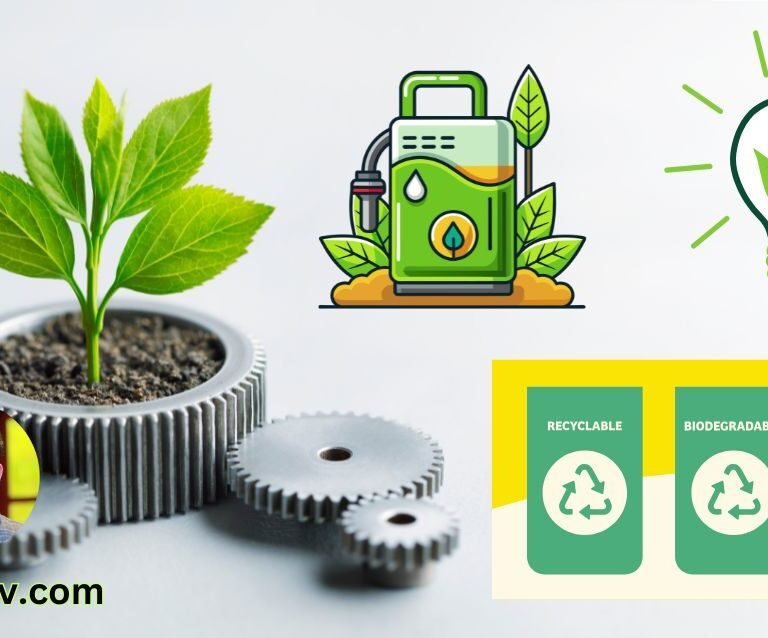1. The Waste Hierarchy (3Rs: Reduce, Reuse, Recycle)
- Reduce: Minimize waste generation at the source by using fewer materials and opting for eco-friendly products. Reducing waste is the most effective way to minimize the strain on landfills and the environment.
- Reuse: Encouraging the reuse of materials that are still functional before discarding them. This prevents products from becoming waste prematurely.
- Recycle: Convert waste materials into new products through recycling processes, reducing the need for raw material extraction and preserving natural resources.
2. Polluter Pays Principle (PPP)
- Concept: The polluter, whether a company or an individual, bears the cost of managing the waste they generate. This could involve paying for recycling services or fines for improper disposal.
- Application: Encourages responsible behavior in waste management by internalizing the environmental costs of waste production.
3. Extended Producer Responsibility (EPR)
- Concept: Producers are responsible for the entire lifecycle of their products, including disposal. This pushes companies to design products that are easier to recycle or dispose of safely.
- Example: Electronics manufacturers may be required to take back old devices for recycling or safe disposal.
4. Integrated Solid Waste Management (ISWM)
- Concept: A comprehensive approach that integrates multiple waste management techniques, such as recycling, composting, landfilling, and incineration, to handle waste in the most effective way.
- Uniqueness: Focuses on the combination of techniques rather than relying on a single method to reduce environmental impact and optimize resources.
5. Sustainable Material Management (SMM)
- Concept: The sustainable use of materials throughout their entire lifecycle — from extraction to disposal — by minimizing environmental impact at each stage.
- Goal: To conserve resources, reduce waste, and mitigate the environmental damage associated with the production, consumption, and disposal of materials.
6. Precautionary Principle
- Concept: When the potential environmental impact of waste management practices is uncertain, precautionary actions should be taken to avoid damage, even if full scientific certainty is lacking.
- Application: Encourages environmentally conscious decisions and innovations in waste management.
7. Life-Cycle Assessment (LCA)
- Concept: Evaluating the environmental impacts of a product or service throughout its life cycle, from production to disposal, to determine the most eco-friendly options.
- Application: Helps in selecting waste management strategies with the lowest environmental footprints, such as recycling over landfilling.
8. Circular Economy Principle
- Concept: Keeping resources in use for as long as possible by designing waste out of the system and promoting the continuous use of materials.
- Application: Shifts the focus from “take, make, dispose” to a system where products and materials are continually reused and repurposed.
9. Decentralized Waste Management
- Concept: Smaller, community-based or localized waste management systems are set up in areas to handle waste closer to the source of generation.
- Uniqueness: This can be more efficient than large-scale centralized systems, as waste is processed more locally, reducing transportation emissions and costs.
10. Resource Recovery
- Concept: Extracting useful materials or energy from waste, such as composting organic materials or converting waste to energy (WtE).
- Examples: Capturing landfill gas for energy, composting organic matter for agriculture, or recycling plastics into new materials.
11. Social Inclusiveness and Participation
- Concept: Encouraging public participation in waste management decisions, especially involving informal waste pickers and local communities. Raising awareness and educating people on proper waste disposal and management is key to this principle.
- Importance: Successful waste management relies heavily on community engagement and participation.
12. Proximity Principle
- Concept: Waste should be disposed of or treated as close to the source of generation as possible to minimize environmental damage and costs associated with transport.
- Application: Encourages the development of local waste processing facilities.
Conclusion
Solid waste management is a complex process that requires a combination of strategies and adherence to fundamental principles. By reducing waste, encouraging recycling, and integrating advanced technologies, we can achieve a more sustainable and efficient waste management system that benefits both people and the planet.









